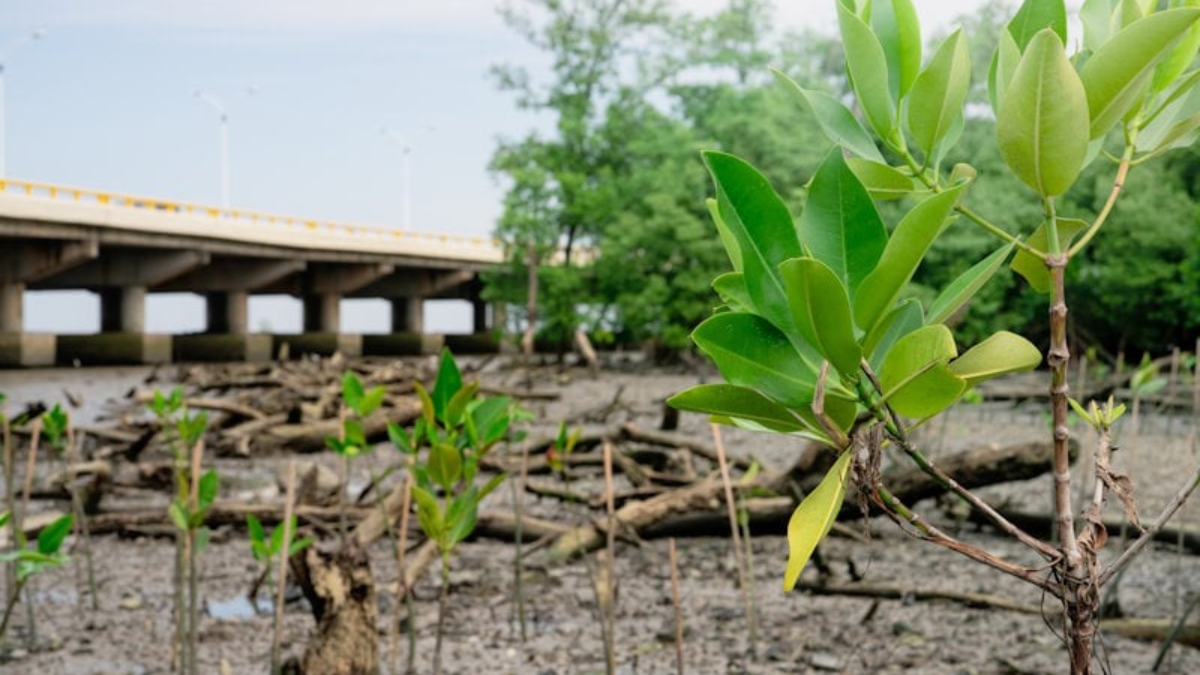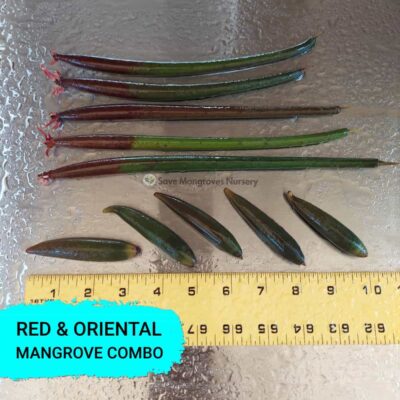Maintaining the right water conditions is crucial for keeping your Red Mangroves healthy and thriving in your aquarium. One factor that often goes unnoticed until it’s too late is the water’s pH level. While mangroves are resilient plants, an excessively high pH can cause significant harm, potentially killing your mangroves. In this post, we’ll explore how pH affects your mangroves and what steps you can take to prevent high pH from wreaking havoc on your underwater ecosystem.
Understanding pH and Its Impact on Mangroves
What Is pH?
pH is a measure of how acidic or basic the water is on a scale of 0 to 14, with 7 being neutral. A pH below 7 is considered acidic, while a pH above 7 is basic or alkaline. For most aquarium setups, a slightly acidic to neutral pH is ideal, but Red Mangroves have their own preferences.
Mangroves and pH Tolerance
Red Mangroves are naturally found in coastal and brackish water environments, where the pH can vary but typically remains within a range that is slightly acidic to neutral. When the pH rises too high, it can cause stress to the mangrove roots, affect nutrient absorption, and eventually lead to the plant’s decline.
🛑 Mangrove Fact 🛑
Red Mangroves are known for their unique ability to thrive in both saltwater and freshwater environments, but they are most comfortable in brackish water with a pH range of 6.5 to 7.5.
Signs of High pH in Your Aquarium
Yellowing Leaves
One of the first signs that your mangroves might be struggling with high pH is the yellowing of their leaves. This happens because a high pH level can lock out essential nutrients, making it difficult for the mangroves to absorb what they need to stay healthy.
Slow Growth
Mangroves are generally slow-growing plants, but if you notice that their growth has almost come to a standstill, it could be due to an unsuitable pH level. When the pH is too high, it can disrupt photosynthesis and other essential processes, stunting the growth of your mangroves.
Root Rot
High pH can also cause root rot in mangroves. If you notice that the roots are turning brown or black and becoming mushy, it’s a sign that your pH levels are out of balance, leading to this potentially fatal condition.
Pros and Cons of Maintaining pH Levels
✅ Good pH Levels (6.5 – 7.5)
- Healthy leaf coloration
- Consistent growth
- Strong root system
❌ Bad pH Levels (Above 8)
- Nutrient lockout
- Stunted growth
- Root rot and other root issues
How to Test and Adjust pH Levels
Testing Your Water
Regularly testing your water is the first step in preventing high pH from harming your mangroves. You can easily do this with a reliable pH test kit, which will give you a reading of your aquarium’s pH level. It’s a good idea to test the water at least once a week, especially if you’re adding new elements like plants or fish that can affect the water chemistry.
Adjusting pH Levels
If you find that your pH is too high, there are several methods to bring it down:
- Adding Driftwood: Driftwood naturally releases tannins, which can help lower the pH level of your aquarium water. Be sure to choose high-quality, aquarium-safe driftwood to avoid introducing contaminants.
- Using Peat Moss: Like driftwood, peat moss can lower the pH of the water. Simply add it to your filter, and it will gradually reduce the pH as it filters through.
- Commercial pH Buffers: There are pH-lowering products available that can quickly bring your pH down to the desired level. Always follow the manufacturer’s instructions carefully to avoid shocking your system.
- Regular Water Changes: Sometimes, the best solution is the simplest. Regular water changes can help stabilize your pH levels by diluting any factors that might be causing the pH to rise.
🛑 Mangrove Fact 🛑
Red Mangroves not only tolerate different water salinities but also help stabilize the pH in their environment by acting as natural buffers, filtering out harmful substances that could lead to pH imbalances.
Preventing High pH in the Long Term
Monitor Your Water Source
One common cause of high pH in aquariums is the water source itself. If your tap water has a naturally high pH, consider using reverse osmosis (RO) water for your aquarium. RO water is stripped of most impurities, giving you more control over the water chemistry.
Limit Alkaline Substrates
Certain substrates, like crushed coral or limestone, can raise the pH over time. If you’re using a substrate that might be affecting your pH, consider switching to a neutral alternative, like sand or gravel, that won’t impact the pH level.
Avoid Overfeeding
Overfeeding your fish can lead to an increase in waste products, which can, in turn, raise the pH. Be mindful of how much you’re feeding your aquarium inhabitants to prevent this issue.
Good vs. Bad Practices for Maintaining pH Levels
✅ Good Practices
- Regular water testing
- Using RO water or treated tap water
- Adding pH-neutral substrates
❌ Bad Practices
- Neglecting water changes
- Using high-alkaline substrates
- Overfeeding your fish
🛑 Mangrove Fact 🛑
Mangroves play a crucial role in coastal ecosystems by filtering pollutants and providing habitat for countless species. Bringing them into your aquarium helps mimic these natural processes, benefiting both your plants and aquatic life.
Conclusion
Maintaining the right pH level is crucial for the health and longevity of your Red Mangroves. By regularly testing your water, making necessary adjustments, and following best practices, you can ensure that your mangroves thrive in your aquarium.
At Save Mangroves Nursery, we sell healthy Live Red Mangrove Plants ready to add to and naturally filter your Saltwater, Freshwater, or Brackish Aquarium tanks. Our plants are shipped out daily to all 50 states, so you can trust that your mangroves will arrive in peak condition, ready to enhance your aquatic environment.
By following these tips, you can enjoy the many benefits of mangroves without the worry of high pH levels damaging your plants. Happy planting!
Best seller products
-
18”-24” Red Mangroves With Roots & 2-4 Leaves
Price range: $34.99 through $87.99 -
10”-14” Red Mangroves With Roots & 2-4 Leaves
Price range: $19.99 through $47.99 -
28″ Red Mangrove Tree – Fully Mature Plant
Price range: $0.00 through $230.00 -
[RARE] Orange Oriental Mangroves Propagule Seeds
Price range: $19.99 through $79.99 -
30″ Red Mangrove Tree – Fully Mature Plant
Price range: $0.00 through $180.00 -
Red & Oriental Mangrove Combo Bundle
Price range: $29.99 through $44.99
 Cart is empty
Cart is empty 




![[RARE] Orange Oriental Mangroves Propagule Seeds](https://savemangroves.com/wp-content/uploads/2025/07/Oriental-Mangrove-Seeds-Save-Mangroves-Nursery-400x400.jpg)



Add a Comment
You must be logged in to post a comment